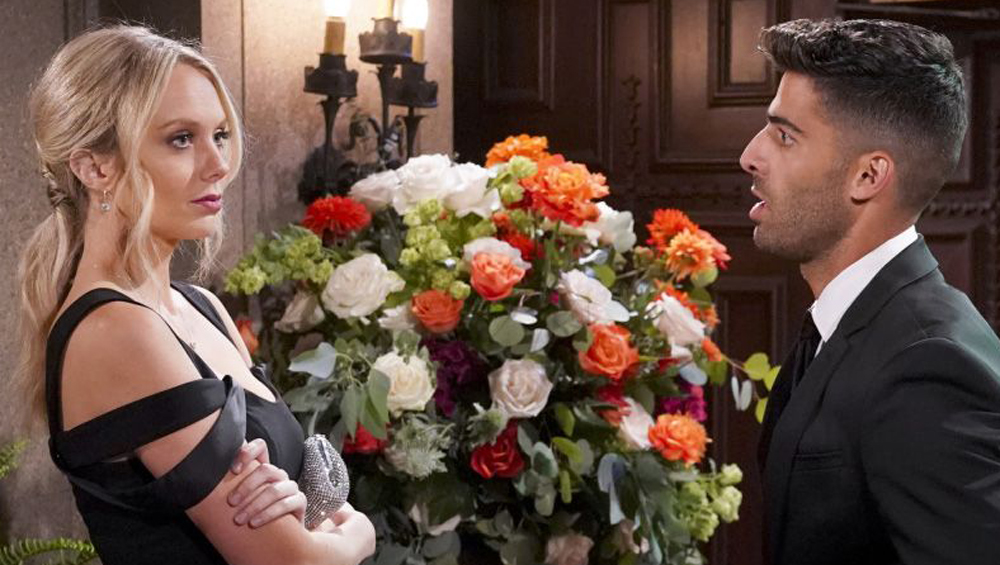
Defying The Odds, Soaps Are Survivors

Nikki is working hard to maintain the conspiracy covering up the death of JT that Rey is now investigating as a murder. Victoria and Sharon are shaky and Phyllis doesn’t even want to talk about it.
Sharon tries to quit her job at the police stations, allowing Rey to believe it’s because she’s afraid to become romantically involved with him when it’s really her fear that she will give away the secret if she works alongside him.
Phyllis agrees with newcomer Kerry that Jabot Cosmetics needs to pare down and modernize its product line if the company is to ward off stiff new competition from Ashley. Kerry later gets a come-on from Jack.
Meanwhile, Mariah and Tessa agree to live with each other as lovers.
Did you follow all that?

CBS’s The Young and the Restless
Well, more than four million people do. Each weekday, they tune in to watch the latest happenings surrounding the Abbott and Newman families in Genoa City on CBS’s Young and the Restless, the most watched of broadcasting’s four surviving soap operas.
Although the four have seen their viewership drop steadily over the years and get older, they continue to entice advertisers who expect them to keep telling their tales for the foreseeable future.
“Just because daytime TV in general and soap operas are older skewing, doesn’t mean there aren’t ad clients who find value in those shows,” says Michael O’Conner, SVP, activation at Horizon Next. “While no client is saying they have to be in a soap opera specifically, there is still a place for the daytime soaps in terms of efficiency in a lot of our buying.”
Nicholas Hartofilis, EVP, national video activation, Zenith Media, agrees. “Viewership in the remaining daytime soaps is still high compared to early morning or latenight programming. They still have a significant audience so the value proposition is strong. Even with the level of viewer erosion they are experiencing, soaps and other daytime shows are still a more efficient buy than other dayparts.”
Stacey Schulman, chief marketing officer at Katz Media Group, says while she has not heard the networks discuss the future of the soaps beyond this season, she can’t think of any reason they would cancel them.
“That would be a gamble,” she says. “There are many advertisers who need to reach that audience of women during the day. And several of the soaps draw more viewers than primetime shows.”
And what would the networks replace those soap hours with?
“If you look at syndication, there are not that many shows drawing more viewers than the soaps, particularly new shows,” Schulman says. “Successful new shows in syndication are slim.”
In 1968 there were 16 soaps on the then three major broadcast networks, but, by 1978, the number had declined to 14. By 2008, it was down to eight. In 2012, it fell to four.
In addition to Y&R, which is still averaging a solid 4.07 million, the soap world still includes CBS’s The Bold and The Beautiful (3.29 million), ABC’s General Hospital (2.3 million) and NBC’s Days of Our Lives (1.97 million).
On the other hand, the viewing trends are not good. Since last fall, Y&R has lost 130,000 viewers, B&B has seen 200,000 viewer departures daily, Hospital has seen a loss of 160,000 viewers, while Days has lost about 90,000.
And the viewership is aging. General Hospital has the youngest median age audience at 62, with the other three at 63. That’s up considerably from 2012 when Y&R, B&B and Days all had a median age of 58 and Hospital was at 54.
While ABC and NBC did not make programming executives available to discuss their soaps and their future on the respective networks, CBS EVP of Daytime Angelica McDaniel says CBS’s soaps remain profitable because the producers have managed costs and because the advertisers keep coming back.
“These are two iconic brands and huge powerhouses,” she says. “At the end of the day if you make great programming you can sell it to advertisers.”
McDaniel points out that many primetime shows are not doing as well as her two soaps are. A check of Nielsen live-plus-same-day ratings comfirms that. It shows that Y&R on average draws more viewers than Will & Grace, Blindspot and Superstore on NBC; How to Get Away with Murder, Fresh Off the Boat and Shark Tank on ABC; and Lethal Weapon and The Simpsons on Fox, among others.
One media agency exec who did not want to speak for attribution says, “Ratings continue to creep down in all dayparts, and the daytime audience is indeed older, but for some advertisers such as packaged goods, food companies, insurance and pharmaceutical, daytime is still likely to provide a value, delivering a concentrated audience of women.
“While most advertisers don’t want to admit it, their audience target is 50-plus. And some have secondary targets as high as 64.”
One other factor that has helped the soaps in popularity with advertisers is that viewers can keep up with them by watching online. CBS streams its soaps on CBS.com and CBS All Access.
And media buyers say — and McDaniels confirms — that the CBS soaps are among the top streamed broadcast programs.
What has also helped the ad selling for all four soap operas has been heavy demand for daytime advertising in general and the ability, so far, of the networks to keep cost-per-thousand rates relatively low.
Daytime CPM increases in this year’s upfront were higher than last year’s daytime increases, but lower than primetime increases, the buyers say.
“For the most part, soap operas are packaged with the daytime talk shows and game shows,” says Zenith Media’s Hartofilis. “Most packages have a blend of shows. Most advertisers today are looking at the daypart as a whole. They want to cover all the available eyeballs across the daypart and get as much reach as possible.”
Hartofilis says as advertisers begin to do more “data informed” daytime buying, they might begin to look to buy specific daytime shows to reach a more targeted audience, but that is still down the road in the daypart.
Brian Hughes, EVP, advanced intelligence and strategy at media agency Magna, believes the future of the soaps as part of the daytime landscape will come down to finances.
“Soap operas are less expensive to produce than primetime dramas, but talk and game shows are likely even cheaper to produce,” he said. “If it stops making financial sense to produce [soaps], and fill those slots with unscripted content, I have to believe the networks will do so.”
Or, he said, “they may decide to give that time back to the affiliates. In either case, if it is going to happen, it will likely happen in the next couple of years.”
Network affiliates are hoping that soap hang on. “Soap operas have played a significant role in the fabric of daytime television for decades,” says Brian Lawlor, the head of the Scripps station group. “While the cost to produce soap operas is significant, these programs remain some of the most brand-loyal shows on television.”


































Comments (0)